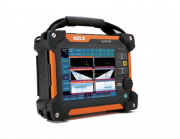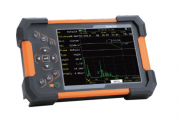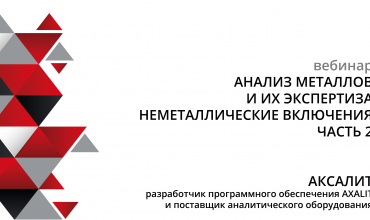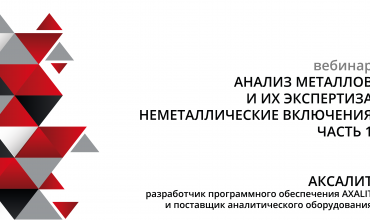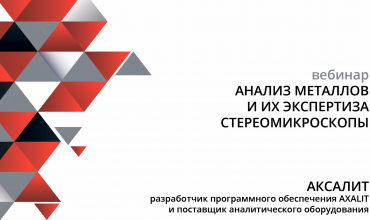Basic optical terms

Let's get acquainted with the basic terms used in optics.
Achromatic lens. When light passes through a glass prism or lens, it bends or refracts. Some colors are refracted more strongly than others, as a result of which they are focused at different points, thereby reducing the resolution. Achromatic lenses are used to reduce this negative effect. They are made up of lenses made from different types of glass with different refractive indices. As a result, different colors are focussed much better (although not perfectly), giving a sharper image.
Binocular tube - the head of a microscope with two eyepieces, for each eye. Usually used with composite microscopes, giving a high magnification. For microscopes with low magnification, the term "stereonadapad" is more often used, since in such microscopes two lenses can be used, each giving an image for each eye. In compound microscopes there can be two eyepieces, but one lens, and they do not give a stereo image.
The head is the upper part of the microscope (Tube), which has ocular tubes and prisms. The monocular head has one eyepiece, the binocular head has two eyepieces (for each eye), the twin one has two, but is spaced apart, and the trinocular head has three tubes, one of which is usually placed on the camera.
Coarse focusing is the pre-focusing microscope flywheels, moving the lens closer or further from the drug (see Fine focusing).
The diaphragm is a disk located under the microscope stage of a high magnification, usually having five holes of different diameters. Turning the dial, you can change the amount of light passing through the hole in the table. This helps to correctly illuminate the drug, increase the contrast and resolution of the image.
Dioptric adjustment. When observed in a microscope with a binocular head, it is necessary to be able to adjust the focusing of one of the eyepieces to compensate for differences in eye vision from each other. This is achieved by means of a dioptric adjustment ring. The correct way of adjusting is as follows. First cover the eye, located above the eyepiece with the dioptric adjustment ring, and focus the microscope in the usual way so that the open eye sees a clear image. Next, open the closed eye and cover the open and, touching the focus control knobs of the microscope, focus the image with a diopter adjustment ring. Now open both eyes, the image should be clear for both eyes (the same technique is used when working with binoculars).
Mirror - a simple illuminator, guiding light through an opening in the table on the sample.
Toothed-rack mechanism is a system consisting of a rack with teeth and gears. Turning the flywheel can cause the gear to move along the rail. Such systems are used in focusing devices, in the attachment of Abbe condensers and mechanized object tables for moving the drug.
Immersion oil is a special oil used with 100x lenses (usually at full magnification of 1000x). A drop of oil is placed on the cover glass and the lens is lowered to touch the drop. The oil acts as a binding medium between the cover glass and the objective lens and thus increases the image resolution. In light microscopy, two types of oil are used - "A" and "B", characterized by viscosity ("B" is more viscous).
Immersion lens - an objective (usually 100x or more), designed to work with a drop of special oil, placed between it and the drug. At the same time, the resolution of the image is increased. See Immersion Oil.
Coaxial focusing is a focusing system using coaxial (coaxial) flywheels of coarse and fine-tuned focus. Usually the coarse tuning wheel is larger in diameter, and the exact one is smaller. In some coaxial systems, the fine-adjustment flywheel is calibrated and makes it possible to capture the value of the relative focus movement.
Ring light illuminator is a separate illuminator, usually fixed on the body of the microscope and giving a ring of light.
Condenser - a lens located under the stage and designed to focus light on the drug. Large magnification lenses have very small diameters and require a lot of light to work. The use of a condenser helps to increase the illumination and resolution. For small magnification microscopes, condensers are not required.
Condenser Abbe - a special lens, located under the stage and usually has the ability to move vertically. Equipped with an iris diaphragm, which defines the diameter of the light beam entering the lens. By changing the size of the diaphragm and moving the condenser closer or further from the stage, you can control the diameter and focus of the light cone passing through the preparation. Condenser Abbe is especially useful on magnifications over 400x. The condenser lens should have a numerical aperture equal to or greater than the numerical aperture of the lens used. In many microscopes with an increase up to 1000x, the Abbe condensers with an aperture of 1.25 are used. The frame is of two types - one type moves up and down while rotating the frame, the other type is equipped with a rack and pinion mechanism and is controlled by a special handwheel.
The contrast plate is a circular opaque plate located on the microscope's small magnification stage. One side of it is white and the other is black. The plate can turn over depending on the color of the preparation.
Base (stand) is a term used primarily to describe the basis of a stereomicroscope, including eyepieces and lenses, but excluding the base, the illuminator and the focusing unit.
The matte plate is a round matte glass plate covering the lower illuminator in microscopes with small magnification. See also Contrast plate.
Viewing angle. Using a stereo or binocular microscope, you need to be able to adjust the distance between the eyepieces. In children, the interpupillary distance is small, in adults it is greater. Accordingly, the eyepieces should vary the distance between themselves to suit different people and this parameter is the first one to be checked for comfortable observations with two eyes.
Manual 3-Plate stage - a stage with the organs of mechanical movement of the drug. Includes a drug holder and two flywheels that move the holder in two directions. Since the image is upside down, it takes a little time to master the adjustments, but such a table is very convenient when observing the simplest and small animals in a drop of water from a pond. Microscopes may have devices for installing the device for moving the drug in addition, or it is built into the subject table by the manufacturer.
Micrometer or micron is a unit of measurement used in microscopy. In one millimeter of 1000 micrometers, respectively, the length of a sample of 1.8 mm can also be expressed as 1800 microns.
Monocular head - the head of a microscope with one eyepiece.
Slip clutch is a device that protects the gears of the focusing device when trying to turn the handwheels beyond the specified limits.
Oblique connection - the design of the attachment of the tube holder to the base, which allows to tilt the microscope for more convenient observation. In this case, however, it is possible that the liquid preparations are draining from the stage.
Objective is a lens located near the object. In a stereomicroscope (with a small magnification) two lenses, each for its eyepiece. This gives a three-dimensional image. On magnification microscope only one lens works.
Objective with a flat field ("Semi-Plan"). Lenses are never ideal. If you look at something that has a completely flat surface, you can see that the image in the center of the field is focused, and on the edge a little blurry. Lenses with a flat field transmit the peripheral part of the image much better. They are better than conventional achromatic lenses, but they are also somewhat more expensive.
Eyepiece is a lens element on the top of the microscope, through which the image is viewed. A typical increase in the eyepiece is 10x, 5x, 15x and 20x are also possible. Wide-angle eyepieces have a larger diameter and give a wide field of view.
Optics of the DIN standard. Optical parts manufactured according to the German DIN standard. The optical quality of such parts is the same as that of non-DIN optics, but compliance with one standard makes it possible to use the details of one microscope on another. The optics are tuned to use a 160 mm long tube and have the same thread. Most quality microscopes use the DIN standard.
Illuminator is a light source fixed under the stage. Distributed three main sources - incandescent, fluorescent and halogen. Incandescent lamps are the most affordable and common. Fluorescent - bright, give white light and almost do not get warm. Halogen lamps are very bright, white, but, like incandescent lamps, give off a lot of heat.
The bottom is the lower part of the microscope tripod (see Tubus holder).
A centered design is an indication that when the lens is changed, the object remains in the center of the field of view. Checked by changing the lens and checking the position of the object in the field of view. Virtually all microscopes are centered.
Parfokalnaya design - an indication that when changing the lens the image remains focused or very close to the focused, and requires only a small adjustment. Most microscopes are parfocal.
Cover glass - a very thin glass or plastic box, located on top of the drug on a slide. When liquid preparations are used, the coverslip creates a plane on which the focus of the microscope is tuned.
The field of view (FOV) is the diameter of the circle of light that can be seen in the eyepiece. The higher the magnification, the less the field of view. It can be measured by placing a transparent ruler on the stage and counting the number of millimeters that fit across the field of view. A typical value is about 4.5 mm at 40x, 1.8mm at 100x, 0.45mm at 400x and 0.18mm at 1000x. See Mic.
Glass of interest - a flat rectangular plate of glass or plastic, on which the drug is placed. It can have a recess to hold a few drops of liquid.
Subject clips fix the slide on the table.
The subject table is a flat plate, on which are slides with preparations.
Resolution is a characteristic of the lens system, showing how subtle the details of the object it can convey.
Revolving nosepiece for objectives is part of a microscope on which lenses are fixed.
Adjustment of the focusing force is performed by the manufacturer in such a way that the microscope can be easily focused, but at the same time the spontaneous movement of the stage or the tube under its own weight, leading to defocusing, is excluded.
The rack stopper is usually installed by the manufacturer and serves to prevent the lens from lowering too low and damaging its or the preparation. Sometimes it interferes with focusing, if the slide is too thin. In this case, you either need to adjust the clamp or place it underneath the slide glass to bring it closer to the lens.
C-mount adapter, used in various types of video cameras. It is usually installed instead of the lens. After that, the adapter is connected to the tube of a trinocular microscope.
Double head. Part of the design of the microscope (usually a high magnification) with one eyepiece on one side and a second eyepiece tube on top or from the opposite side. The dual head is convenient for the teacher to control what the student observes or to install a video or camera. It is not recommended to use such microscopes for joint work of two students, as long observations in the upper ocular tube are inconvenient.
Mesh ocular - a very small mesh, installed in the eyepiece. Allows you to measure the size of objects observed through a microscope.
Stereo - applied to microscopy means seeing both eyes through eyepieces, each connected with its own lens. Two lenses give a sense of volume, three-dimensional view. See also Binocular head.
The pole stand is a type of tripod used in microscopes with small magnification. It consists of a vertical column fixed to the base. The microscope body can rotate around the column and move along it up and down.
T-thread - the type of connection of the adapter for the camera (usually 35 mm) with a microscope.
Precise focusing is the flywheel used to accurately focus the microscope. Also used to focus on different layers of the drug. Usually, the pre-focusing is performed by the coarse focus adjustment handwheels, and the sharpest focus is achieved with the fine-focus flywheels.
The trinocular tube is used with both small magnification microscopes and high magnification microscopes. It has three outputs - two under eyepieces for two eyes, and the third - a port for installing a photo or video camera. In some microscopes, it is possible to adjust the amount of light sent to the third port, for example, the whole light or half, or third. On some stereo trinocular heads with double magnification, the third port transmits the image from a separate set of lenses not used by the stereo eyepieces.
Tubusoderzhatel - part of the microscope, connecting the tube and the base. When carrying the microscope, hold it with one hand at the base, and the other - with the tube holder.
Turret - see turret head.
Index - some eyepieces are equipped with a pointer-pointer, which can be installed on this or that detail of the image. Rotation of the eyepiece rotates the pointer.
A universal tripod is a long tripod of the "crane" type used to secure the small magnification microscope body. It has several position adjustments and allows the microscope to be arranged in a variety of different ways. Usually an external illuminator (for example, fiber optic) is used with it.
Field tube holder - type of tripod used in small magnification microscopes. The body and the tube of the microscope are a single unit and rigidly fixed to the base.
Focusing - the process of moving the drug closer or further from the lens to get a clear image. Some microscope moves the stage, on the other - a tube. The most popular and reliable design is the focusing unit based on the rack.
X - the designation of the magnification factor on the lens or eyepiece, for example, 200X - two hundred times the magnification. The full magnification of the microscope is determined by the product of the magnification of the lens to increase the eyepiece.
XR is the designation for the magnification multiplier on the lens (see above), indicating that its front frame is spring-loaded and folded when the lens is accidentally lowered onto the slide. This prevents the lens or slide from breaking.
Numerical aperture (N.A.) is a number reflecting the ability of the lens to resolve fine details of the observed object. It is determined by a complex mathematical formula and is associated with the angular aperture of the objective and the refractive index of the medium between the objective and the preparation. To obtain the best image, a condenser is required, with a numerical aperture that coincides with or exceeds the numerical aperture of the microscope objective with the largest magnification. The numerical aperture is important only for microscopes with a large magnification.
Hinged base. The type of the base of the microscope, which is fixed on the table and makes it possible to move the microscope tube in three dimensions.
Wide-angle eyepieces are eyepieces with large-diameter lenses, giving a wider field of view when observing the drug.
Tripod - the type of connection of the microscope body and the base in small magnification microscopes. There are three types of tripods - a pillar, a rigid (fixed) holder and a universal adjustable tripod.









